Today, every gardener has a huge selection of various decorative plants, among which you can find the perfect option for your site. Flowering decorative decorative trees and shrubs are one of the most important landscape elements around which the overall composition is built. That is why it is so important to find exactly the culture that will simultaneously have a bright appearance and unpretentious in care. All these qualities can be fascinated by Kerryia Japanese - the plant is simply incredible beauty, which, during flowering, can eclipse any floral cultures.
Kerry Japanese terry or simple has an incredible golden shade of his colors, which like small roses open their buds and fill the garden with sunlight.
In order to decide on the choice of Kerria Japanese and put this plant correctly, in this article we consider the features and description of Kerrie Japanese, as well as the characteristic of popular varieties of decorative shrub. We present important rules for landing and care for this type of Kerrie.
Features and description of Kerria Japanese
Landing on its part of Kerria Japanese is considered a sign of excellent taste, since this shrub has a huge decorativeness at any time of the year. Its lush golden yellow flowers, so similar to roses, happy with long blossom and gentle appearance. In the presence of your household plot, it is worth thinking about such a decorative plant, as the landing and care of the bush of Kerria Japanese is quite simple and will not require additional investments or efforts.
Kerry Japanese is a long-term decorative, decorative, blooming shrub, which belongs to a large family of rustic and is the only representative of a kind. However, despite this, this plant cannot be called boring and uninteresting, as breeders carried out a vast work to bring the large number of forms and varieties of Japanese Kerria, who will certainly decorate any plot. The natural habitat area is quite narrow - in nature, these shrubs received their distribution only in Japan and China. From a long time, it was possible to meet bright yellow shrubs of Kerrie Japanese in highland and rare forests of these countries.
This shrub received its name "Kerria" or Kerria, in honor of the name of the famous first gardener, who worked in the popular Royal Botanical Garden on Ceylon William Kerra, who also engaged in collecting rare and unusual plants. It was he who first gave the description of the Kerry Japanese shrub. In addition to the generally accepted scientific name, Kerry Japanese also has a number of folk names that accurately transmit beauty and brightness of culture. Among the most popular, the following can be noted: "Japanese Rose" and "Easter Rose". The last name is associated with the time of flowering Kerrie, which falls on the main Orthodox holiday - Easter, as well as with the form of flowers that resemble a small rose.
Description of Kerrie Japanese:
- Kerry Japanese is a leaf falling, a disadvantaged plant that grows in the form of a rather large shrub. It is considered decorative and decorative flower shrubs.
- The root system of Kerria Japanese is quite branched and is relatively deep.
- Kerry is a compact deciduous shrub with a correct and neat crown, which consists of thin and straight shoots. At the very beginning of growth, Kerrie's shoots form a strict pyramidal form. They are straight and green and do not have a constant bark.
- With age, shoots become more branched and begin to be tilted to the parties, which radically changes the shape of the shrub, makes it more curly and openwork.
- In the height of Kerry, Japanese can reach about 1.5-2 m, and when all cultivation conditions are met, this decorative plant can grow up to 3 meters. If you want to get such a magnificent and large bush, it is enough to put it on an open spacious area.
- This plant has an excellent feature to quickly increase shoots immediately after the spring landing.
- Kerria Japanese shrub also quickly grows in width, the diameter of the plant can be about 2-2.5 meters.
- All shoots are covered with leaves, which for their structure resemble the leaves of raspberries. In length, they reach about 10 cm. In the form of lancing leaves, pointed at the ends and served around the edge. The sheet plate in the upper part is smooth and glossy, and on the bottom side is slightly pubescent.
- In the spring and summer, the leaves have a delicate light green shade, and in the fall acquires a bright golden color, which makes the shrub especially bright and festive. Leaves can start appearing after flowering.
- Kerrie's flowering starts in spring in April or in May if the plant grows on the territory with a more severe climate. Kerry Japanese will delight enough long blossom, which can last up to 25-35 days. Most often bloom repeats at the end of summer or in the fall. Sometimes individual flowers can appear throughout the summer.
- Japanese Single Kerria flowers, have a simple or terry form, consist of petals and fluffy middle of the stamens.
- Simple flowers of Kerria resemble leaf flowers, and terry - small roses.
- The predominant majority of Cerrian Japanese varieties have a saturated golden shade flowers, but there are varieties with snow-white colors, for example, Kerry Japanese Albaflora.
- Flowers bloom at the ends of the shoots or in the sinuses of the leaves and exuded a rather sharp smell, which something resembles the smell of dandelions.
- The size of the colors may differ depending on the variety of Kerria by Japanese, but the average is about 3.5-6 cm.
- After biting the CERRIA CERRIA in the regions with a warmer climate, fruits in the form of black spray-like ceiling ripen on the plant.
- Kerry Japanese is characterized by good frost resistance and endurance due to a powerful root system, therefore, even in the case of a small frozen of shoots, the shrub can be recovered.
- This culture is often used in European landscape design. Japanese Kerria Shrub can be planted next to the same blooming decorative bushes.
- Kerrie's shrub is considered very unpretentious in the leaving of the plant, which is growing rapidly and in one place can be about 10-15 years old.
- One of the peculiarities of the plant is its resistance to air basement, so Japanese can be planted in urban conditions.
Popular varieties of Kerria Japanese
Kerry Japanese is the only representative of this kind, but this decorative shrub is represented by a large number of bright varieties that are distinguished by the appearance and peculiarities of growing. You can find a wide variety of Japanese Kerria, among which every gardener can choose a kind of variety depending on the structure of the cookistic, the colors of the inflorescence, the height of the plant and the winter hardiness. Consider the characteristics of the most popular varieties of Kerria Japanese.
- Kerry Japanese Pleniflora. This type of decorative shrub is distinguished by beautiful terry flowers, which are very reminiscent of small roses buds. The grade is a lush neat shrub, which is formed by reprehensive thin shoots. In the height, the shrub of this variety can reach 2 meters, while in diameter grows up to 1.5 meters. Blossom starts in about mid-May and lasts on average one month. The Cerria variety of the Japanese Pleniflora is distinguished by beautiful terry colors, which in diameter can be about 3-3.5 cm. The winter hardiness of the Japanese delimplore Kerria is not very good, so the plant needs shelter. The shoots are flex to the surface and are covered with a sweetheart and underfloor material.
- Kerry Japanese auregigata. Another sort of shrub with terry flowers, which are distinguished by a more complex structure and a bright golden-yellow tint of petals. With proper care, the plant of this variety can bloom up to 3 months in a row.
- Kerry Japanese Picta. This is a fairly low shrub plant, which in height can grow only 1 meter. The bustice is compact and neat, has a correct cone shape, which is formed with thin reprehensive shoots. The variety of the spectacular foliage of the green shade is distinguished, which has uneven white spots on its surface and white border along the edge of the leaf. Often in garden centers you can find this variety under a different name - Kerry Japanese Variagat. Flowers of this plant are simple, consist of 6 bright yellow petals.
- Kerry Japanese Golden Guinea. Another very spectacular variety of Kerria Japanese, which is distinguished by beautiful colors. A shrub has a compact and correct shape, height can reach about 2 m. The bloom is very abundant, the flowers themselves are simple, consist of 5 petals that have a bright dark lemon shade. For many sources, this color resembles the color of the old, who came out of the appeal, Golden British coins of the Gynes, so this variety can have a slightly different name - Kerry Japanese Golden Guinea or Guinea. The diameter of the colors is approximately 6 cm, which also corresponds to the size of the ancient coin.
- Kerry Japanese albomarginata. It is a rather unparalleled bush, which is also characterized by quite slow growth. The leaves of this variety are asymmetrical with white border along the edge of the sheet plate. Flowers of simple structure and yellow shade.
- Kerry japanese argenteomarginata.. This variety of Kerrie very much resembles the previous variety, which is characterized by higher growth. Bustic can grow up to 2 meters. The leaves are asymmetrical and have a thinner whitish-cream border along the edge.
- Kerry Japanese captivity. This variety is often grown in nurseries, where employees call the plant with a butterfly bush for their simple yellow flowers, which are pleased with a bright yellow tint. The bush is distinguished by rapid growth and is perfect for creating alive hedges, since the plant of this variety gives a lot of young row.
- Zapan Kerria variety "KIN KAN". The variety is a beautiful and compact bush, which in height can reach about 1.5 meters. It is distinguished by simple yellow flowers, which consist of 6 petals. The bloom is very abundant.
- Cerria variety of Japanese albiflora. Pretty exotic variety of Kerrie, who pleases the eye with snow-white flowers. Flowers are quite large, terry. A shrub in height reaches 2 meters, shoots thickly covered with a saturated green leaves.
Japanese Kerria reproduction: The most common ways
Kerry Japanese will delight gardeners with his unpretentiousness and ease of cultivation. Dilute this decorative plant is quite simple in their own hands on the plot. For this, it is important to know the basic methods of breeding, as well as their characteristics and rules for conducting. Kerry Japanese multiplies only in vegetative methods, among which the following can be distinguished: the shilling, the division of the bush, the reproduction of grains and siblings. Consider the features of all variants of Kerria.
Breeding of Kerria by Japanese stalling
- This method of reproduction of Kerria Japanese is most often used, as it has a fairly high percentage of rooting seedlings and simple, as it does not require a large number of actions from gardener.
- To reproduce this plant with stalling is recommended in the spring after trimming the shrub crown.
- As a landing material, you can use both weathered cuttings and green, which are cut in the early summer.
- On the Kerrie Japanese bush, strong and healthy shoots are chosen, from which 6-7 cm long cuttings are cut, which must have at least two kidneys.
- The lower cut must be done at an angle, which will facilitate rooting.
- Next, you need to take care of the place of rooting. It is necessary to do this in greenhouses or in special containers, which are then covered with film or glass.
- It is important to choose a suitable soil composition, which should consist of a delicate land, deciduous land, humus and sand.
- The cuttings are rooted in the prepared ground at an angle, after which the greenhouse is closed or the container is covered tightly glass. The greenhouse must be in the shade so that the straight sun rays will not fall on it.
- The rooting occurs long enough, during which it is important to regularly water the cuttings and ventilate.
- After the first sprouts appear, the shelter can be removed. The cuttings remain wintering in a greenhouse or created shelter.
- Only in May you can transplant young seedlings into an open ground to grow. A year later, strong cuttings are suited for a permanent place.
Breeding Kerria by Japanese division bush
- This is another fairly simple way to reproduce the Japanese Kerria, which often use experienced gardeners.
- The division of adult cooks is often accompanied by a plant with a transplant or rejuvenation. For this, the bush carefully digs, slightly shake the soil with the roots.
- Then a sharp secateur or ax divide the rhizome into several parts in such a way that every decene has healthy and strong roots and shoots.
- After that, young seedlings are planted in pre-prepared landing pit.
- To multiply Kerryia Japanese division, it is not necessary to dig up the entire bush. A slightly slightly digging on one side of the shrub and gently shovel disconnect the part of the slips, which appears in the plant.
- After that, the resulting young plants need to be rooted into the shade.
Breeding Kerria by Japanese brass
- The method of breeding kerrium horizontal grains is also used quite often.
- It is recommended to conduct such reproduction in the spring before the start of the deploration and active vegetation.
- To do this, on an adult bush, it is necessary to choose strong and healthy shoots without damage and carefully tilt them to the surface of the earth, where you first need to dig up a small grooves depth 7 cm.
- Warning is important to fix with special brackets or wires so that they do not return to its original position.
- The soil is not sprinkled.
- About a month later, young shoots and the first leaves will begin to appear from healthy kidneys. When the shoots are reached in a height of 10-15 cm, the tanks are sprinkled by the soil, leaving only the top.
- Regularly it is necessary to moisten the soil and loosen the surface of the Earth.
- Already by the fall, the shoots will appear strong roots, so the next spring they are separated from the mother's bush and disembarks at a permanent place.
Preparation before landing Kerria Japanese
Kerry Japanese is a beautiful and unusual deciduous plant, which despite its bright appearance, does not differ in landing and care. Even the most inexperienced gardener without problems can cope with the planting of this plant in open ground. However, for the prosperous completion of this process and obtaining a magnificent flowering shrub in the end, it is important to carry out the preparatory work correctly and competently.
Stage 1. Selection and acquisition of Kerria Japanese seedlings
- First of all, it is necessary to purchase Kerria Japanese seedlings if there is no adult plant from which the seating material can be obtained.
- You can buy Kerry Japanese in specialized garden centers and nurseries who are professionally engaged in breeding plants.
- Before buying, be sure to think over the future garden composition, since all the varieties of Kerria Japanese have a different height of the bush.
- In garden shops and nurseries, you can buy many varieties of this plant. However, if you buy Japanese Kerria seedlings in a nursery, you can be sure that they are successfully acclimatized in the climate of your region.
- Before purchasing seedlings, be sure to carefully inspect the upper part of them, as well as the root system or soil in the container. Soots and foliages should have a healthy and fresh look, they should not be damaged or yellowed. The open root system should be elastic and healthy, without rot. Soil in the container is clean and moistened.
Stage 2. Choosing a place to land Kerria Japanese
- Kerry Japanese feels great on the plot with the most different illumination. On solar open places, in a mild seating or with a scattered light, this bush will delight with bright flowering. Everything is due to the fact that the flowering of Kerria begins long before the active growth of other cultures.
- However, it should be borne in mind that under the right sunny rays, bright golden flowers are prone to burnout, and in highly pronted places blooming can be scarce.
- Kerry Japanese is badly leaving for highly open places where the wind is often blowing. Therefore, it is important to find a closed and quiet place on its plot.
- For Kerria, you can choose a place on the background of lawn, in a living hedge, in garden compositions, as well as in pots and containers.
- Soil This plant prefers garden fertile with good drainage. The soil must necessarily be loose and lightweight, loamy or soup.
Japanese landing technology
- Landing Kerria Japanese is carried out in the spring and autumn. However, for the middle strip, the spring landing is still recommended, as the plant has time to grow and get involved before the onset of cold weather.
- First of all, it is necessary to prepare landing pits on the selected area. The size of one landing pit should be approximately 60 cm wide and in length, as well as 60 cm in depth. If you sit down several seedlings nearby, it is important to observe the distance between the wells. On average, it should be at least 1 meter, but when forming a living hedge, it is better to leave about 50 cm.
- Next, on the bottom of each pit, you need to lay a layer of drainage from the broken brick or small stones.
- The soil is important to mix with humid, glass of wood ash and 80 grams of complex mineral fertilizer.
- Next, the seedlings of Kerria Japanese are placed in the landing jamas so that the root neck is to be flown with the surface.
- Carefully sprinkle soapins soil and press your hands.
- After landing, young plants are abundantly watered, and the rolling circle is mounted peat or humus.
Japanese Kerria Growing Agrotechnology: Secrets and Nuances of Care
Care for Kerria Japanese is quite simple and will not cause difficulties in gardeners.
- Watering. For full growth and flowering of Kerria's shrub, it is important not to forget about regular irrigation, but it is not worth it and overdo it, since the oversupply of moisture can harm. Watering the bustice is needed when the upper soil is dried, the frequency of irrigation increases into a dry summer and during flowering. At the same time, it is necessary to use the well-standing water, which has previously heated in the sun.
- Loosening and mulching. It is also important to regularly loose the upper layer of the soil to ensure the inflow of oxygen to the roots. At the same time, all weeds are removed and the rolling circle is covered with a layer of mulch from peat or humus.
- Podchar. So that the plant pleases you with abundant and magnificent blossom, it is important to carry out the japanese kerrium. There is enough one feeding in the spring after trimming and after flowering. As a fertilizer, you can take the infusion of a cowboy or wood ash.
- Trimming. In the spring before starting active vegetation, it is important to carry out the sanitary trimming of the Japanese Kerrie, during which all damaged and broken shoots are removed, and also remove the old branches, thereby thinning shrub. In the fall, after the completion of flowering, it is necessary to carry out the forming trimming, during which 1/4 of the escape is removed, where there was a flower.
- Preparation for winter. The winter hardiness of Kerria Japanese directly depends on the place of its cultivation. If you bought seedlings in the nursery, these plants will be adapted to the climatic conditions of your region. However, in any case, it is important to cover this plant for the winter. On average, this culture can withstand frosts up to minus 20 degrees, but the shelter is already being built for minus 10. For this, the branches should be burned to the surface of the Earth, fix them, and then pour into a foliage or spruce noodle and cover with underfloor material.
Kerry Japanese - Photo
Japanese Kerry - Reviews
Ekaterina Vasilyevna, Moscow:
"Most recently decided to take the landscaping of his small site and everything could not decide on the plants. Until I saw Kerry's friend. She just struck her appearance. When the seedling seedling of this Kusty, was afraid that the care would be unbearable, but everything is just wonderful. The plant grows quickly and practically does not require care. We have already watched bright solar flowering twice. "
Mikhail, Bryansk:
"Kerry Japanese planted on his plot a couple of years ago. The first year seedling grew weakly, thought he would not survive. However, after a year, the growth of the plant was noticeably accelerated and the first colors appeared, which re-appeared on the fees in the fall. It looks like a plant while blossoming is amazing. "
Kerry Japanese is a bright plant that will become an excellent decoration of any site or terrace without requiring a lot of time and forces to treat yourself.

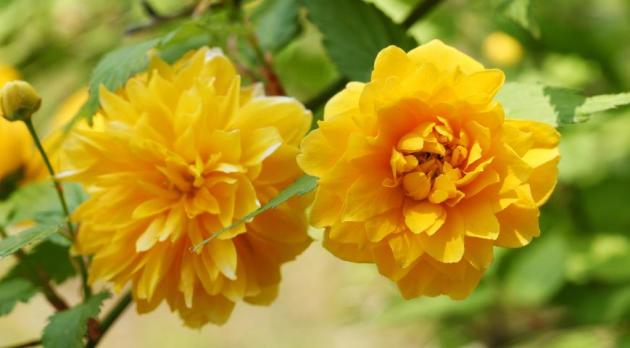
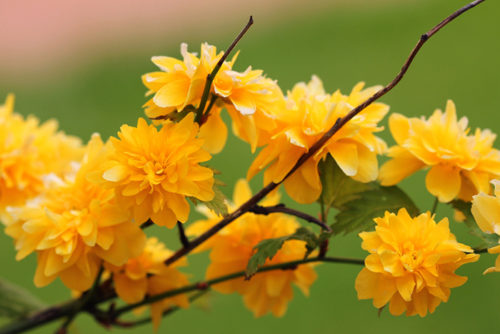
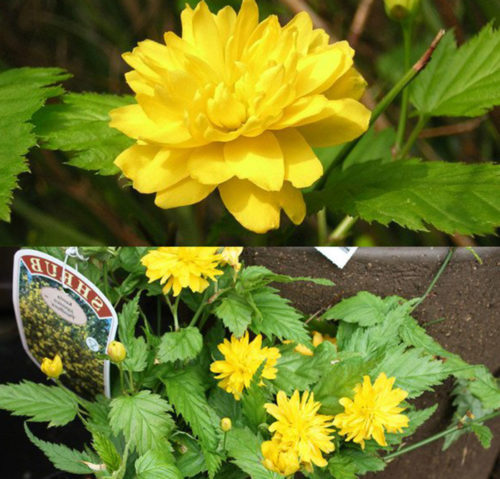
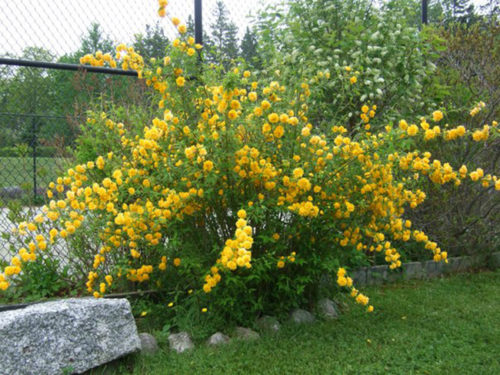

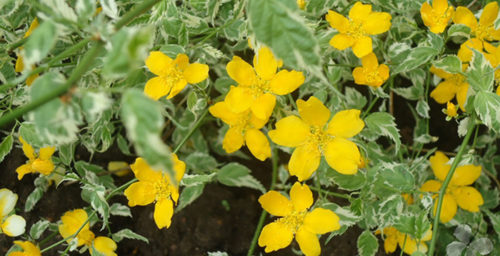
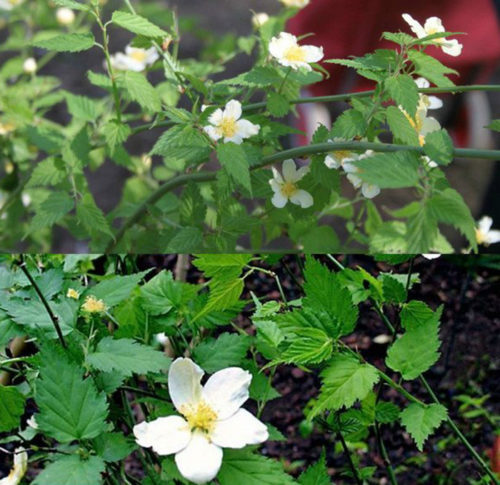
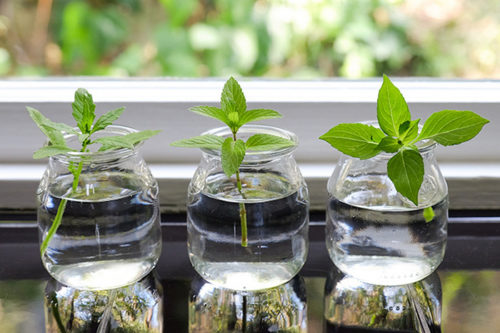
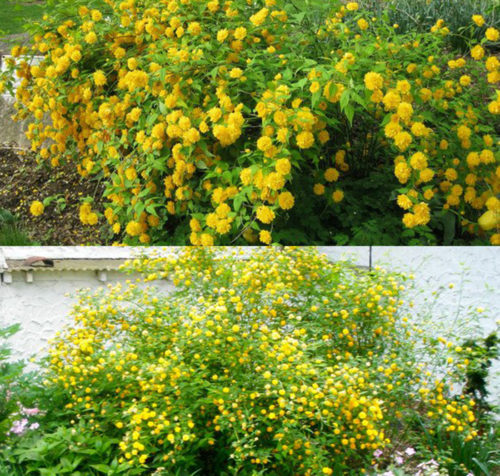
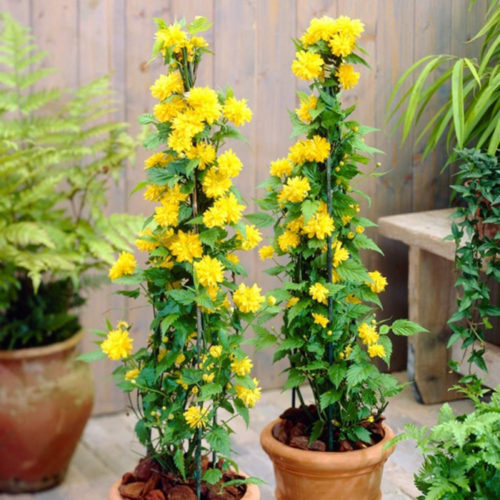
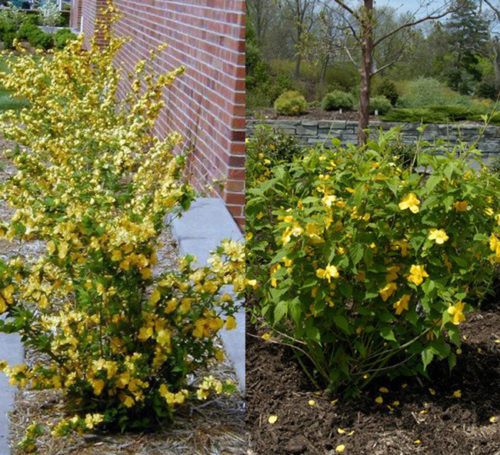
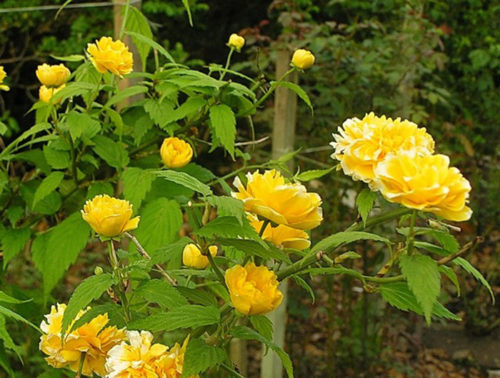
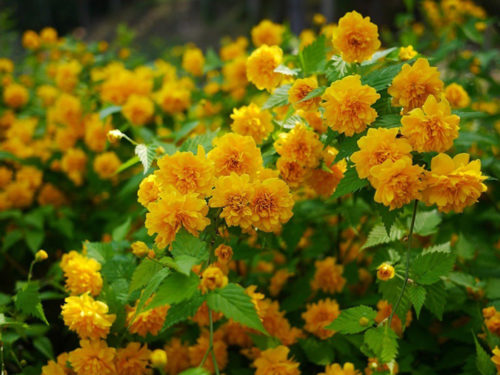
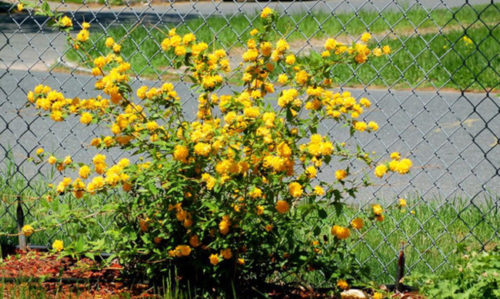
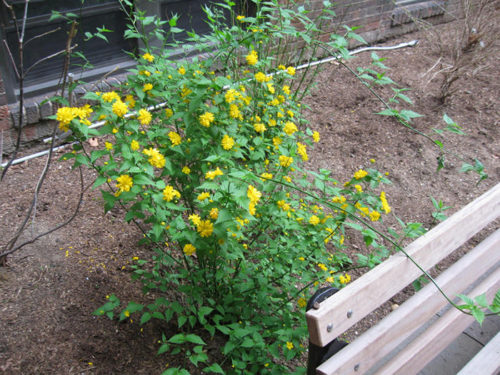
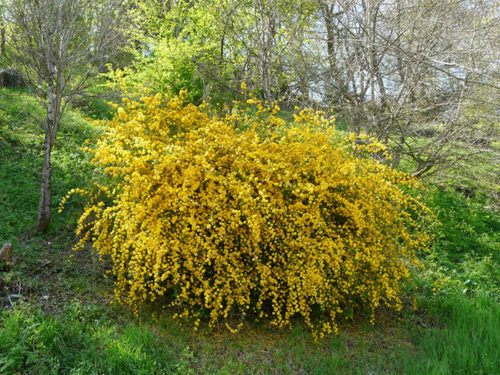












 Start a discussion ...
Start a discussion ...